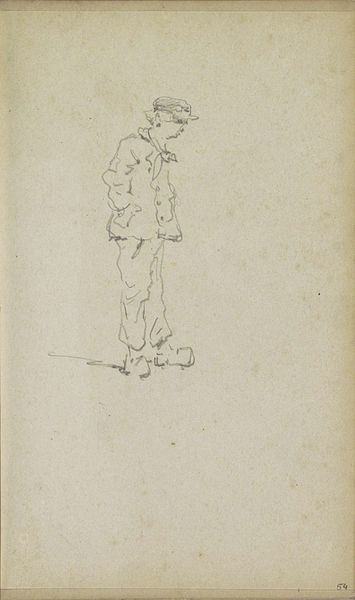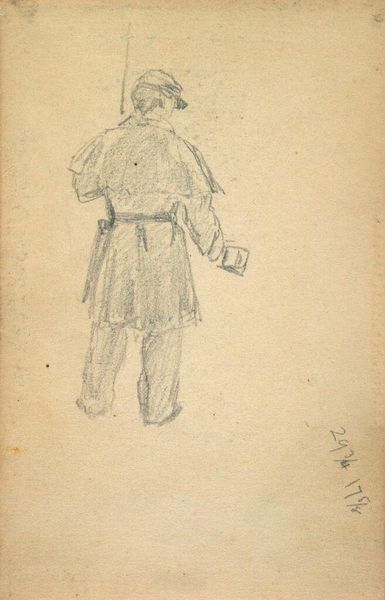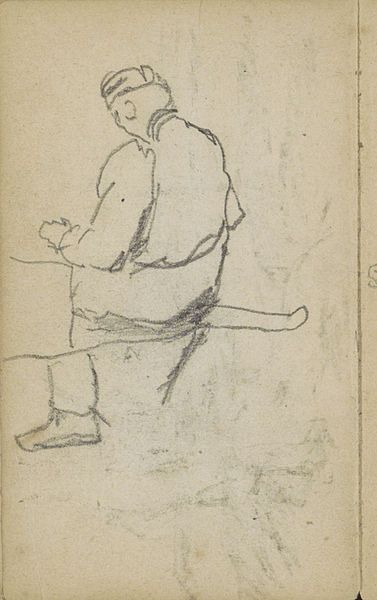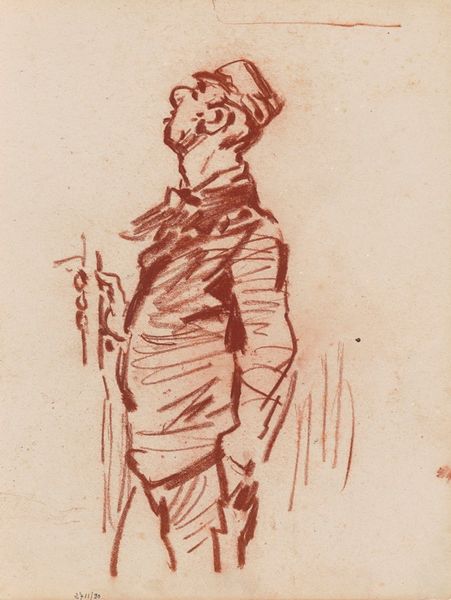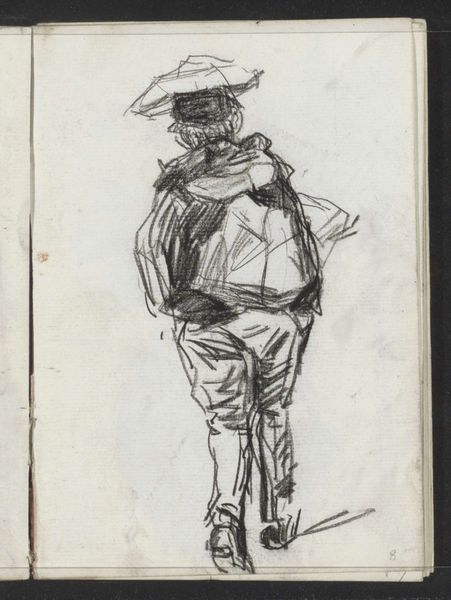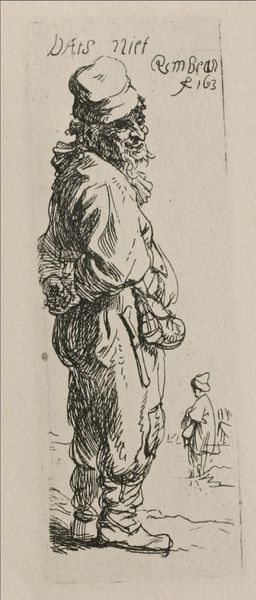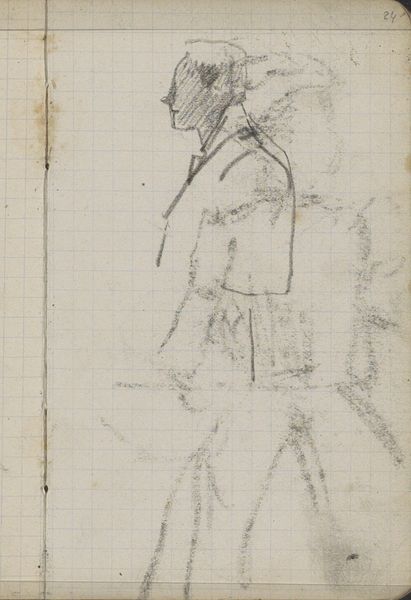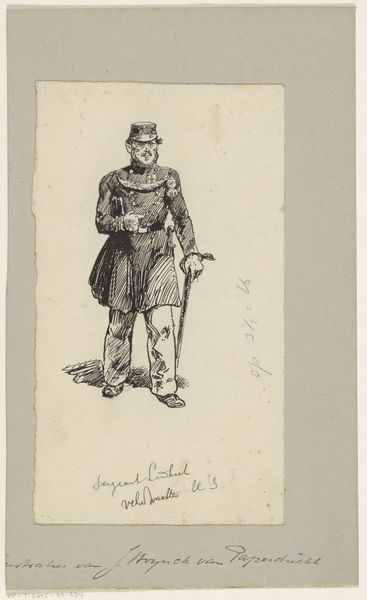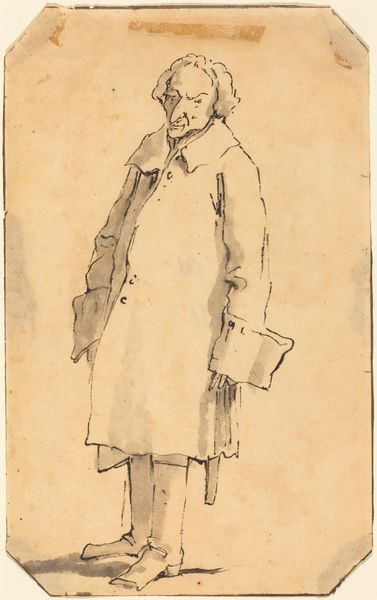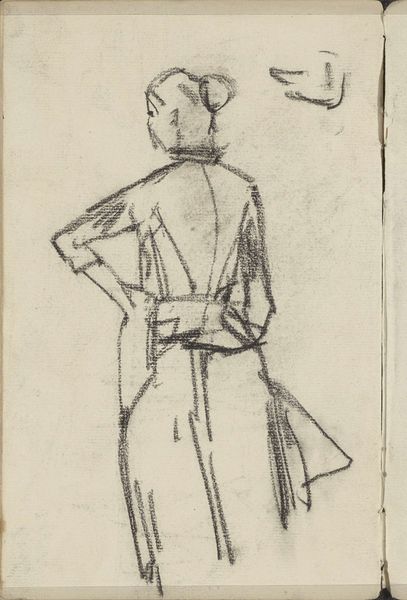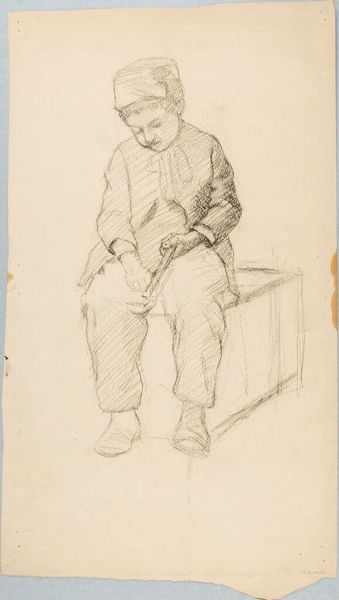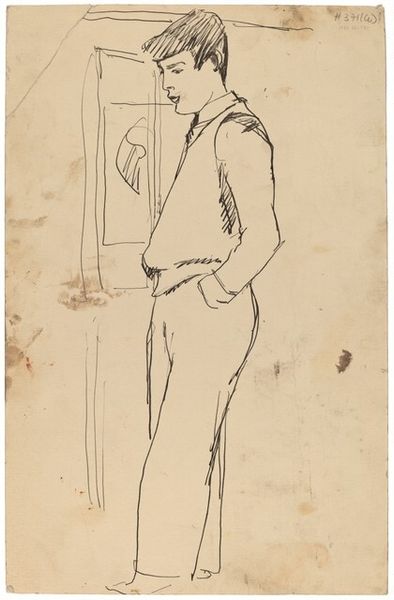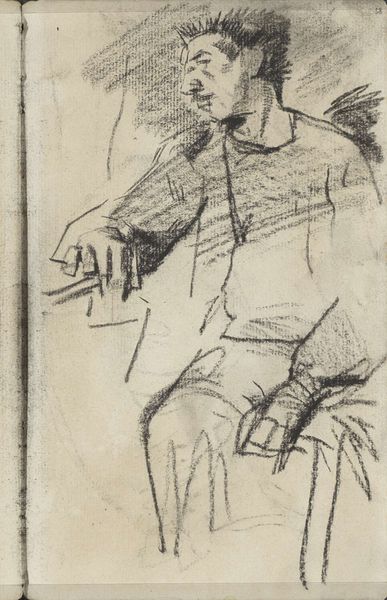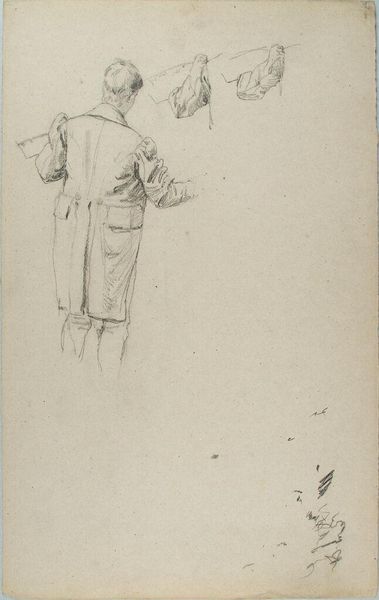
drawing, paper, pencil
#
portrait
#
drawing
#
light pencil work
#
quirky sketch
#
sketch book
#
paper
#
personal sketchbook
#
idea generation sketch
#
sketchwork
#
pen-ink sketch
#
pencil
#
sketchbook drawing
#
storyboard and sketchbook work
#
sketchbook art
#
realism
Copyright: Rijks Museum: Open Domain
This sketch by Johan Hendrik Weissenbruch captures a standing man with his hands clasped firmly behind his back. The gesture, seemingly simple, resonates with complex historical and cultural meanings. Consider how this posture echoes across time: from ancient depictions of contemplation to modern expressions of restraint or hidden intent. The clasped hands, a motif that appears in various contexts, speak of concealed action, suppressed emotion, or quiet observation. It appears in Renaissance portraits, where it often signified nobility and self-control. This motif engages us subconsciously, drawing from our collective memory. It evokes a sense of something held back, a tension between outward calm and inner turmoil. It has evolved through centuries, each era imbuing it with new layers of significance. Is he holding himself back? Is he hiding something? Thus, the man’s posture in Weissenbruch’s drawing becomes a powerful symbol, engaging viewers on a deep, subconscious level.
Comments
No comments
Be the first to comment and join the conversation on the ultimate creative platform.
